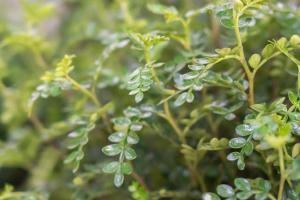How to Use Charcoal in Potted Plants
Charcoal is a brilliant addition to any houseplant setup. Its porous properties make it an excellent choice for aerating soil and providing essential nutrients for plants. Here's how to use charcoal in potted plants for optimal growth and health.
1. Choosing the Right Charcoal
Not all charcoal is equal when it comes to potted plants. Activated charcoal is the best option. This type of charcoal is created by heating carbon-rich materials, like coconut husks or bamboo, to high temperatures. The high heat eliminates impurities and creates a porous structure that traps toxins, excess moisture, and other harmful materials in the soil.
2. Preparing the Charcoal
Before adding charcoal to your houseplants, it's essential to prepare it correctly. First, rinse the activated charcoal under cold water to remove any dust or debris. Next, break the charcoal into small pieces, roughly the size of your thumbnail. Be careful not to crush the charcoal, as this can reduce its aeration capabilities.
3. Adding Charcoal to Soil
One of the easiest and most effective ways to use charcoal in potted plants is by mixing it with the soil. Add a 1:1 ratio of activated charcoal to soil for best results. Simply sprinkle the broken charcoal pieces on top of the soil, then mix it in thoroughly. When repotting a plant, add a layer of activated charcoal at the bottom of the pot before adding soil. This will help provide essential nutrients and aeration while preventing mold and root rot.
4. Using Charcoal as a Water Filter
Another way to use charcoal in potted plants is to use it as a water filter. Place a piece of activated charcoal in the bottom of your watering can or bucket. When you water your plants, the charcoal will purify the water, removing chlorine and other contaminants, and aerate the soil at the same time.
5. Replacing Charcoal
Although charcoal can last for years in soil, it's best to replace it every six months to a year, depending on how frequently you water the plant. When you notice that the charcoal pieces have shrunk significantly, it's time to replace them.
Conclusion
In conclusion, adding activated charcoal to your houseplant setup is an excellent way to enhance plant growth and prevent common issues like root rot and mold. Remember to choose the right type of charcoal, prepare it correctly, mix it evenly with soil, and check on it occasionally to ensure it's still providing the necessary aeration and nutrients. With consistent use and regular replacement, your plants will thrive with the addition of activated charcoal.

 how many times do yo...
how many times do yo... how many planted tre...
how many planted tre... how many pine trees ...
how many pine trees ... how many pecan trees...
how many pecan trees... how many plants comp...
how many plants comp... how many plants can ...
how many plants can ... how many plants and ...
how many plants and ... how many pepper plan...
how many pepper plan...
































